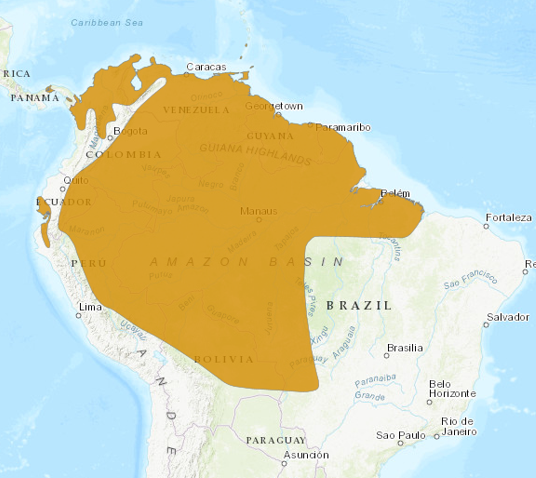Birdfinding.info ⇒ Widespread and common across much of its large range—and reported more often than other small swifts because it is easier to identify. Present at most Amazonian sites, including lodges and cities. In Panama, it can often be found in downtown Panama City beside the canal, in Gamboa, and along the Pipeline Road. Also common on both Trinidad and Tobago. The western “Tumbes Swift” is localized, but can be found in Guayaquil and the Jorupe Reserve in Ecuador, and Tumbes National Reserve in Peru.
Short-tailed Swift
Chaetura brachyura
Tropical lowlands of northern South America, Panama, and the Lesser Antilles.
Comprises two distinct forms:
“Short-tailed Swift” (brachyura plus two other subspecies) is widespread.
“Tumbes Swift” (ocypetes) is confined to the Tumbesian biome.
Resident from central Panama east through the northern lowlands of South America, south into the Chocó lowlands and Cauca and Magdalena Valleys of Colombia. Resident at least to western Panama Province and at least occasional to Chiriquí and Coiba Island and south to Tumaco, Colombia.
Widespread east of the Andes from the Caribbean and Atlantic coasts south throughout the Amazon Basin, east to Piauí and Tocantins, and south to eastern Bolivia, southern Mato Grosso, and western Goiás (to Emas National Park).
In the West Indies, resident on St. Lucia, St. Vincent, Trinidad, and Tobago. Status on Martinique is uncertain—flocks have been noted on the island consistently during the 2010s, possibly indicating recent colonization, although its persistence remains to be seen. Vagrants have been recorded on Barbados, Grenada, Guadeloupe, Puerto Rico, St. Croix, and Union (Grenadines).
“Tumbes Swift” is resident in Pacific lowlands and foothills (up to about 2,000 m elevation) of Ecuador and adjacent northwestern Peru from northern Manabí to northern Lambayeque.

Brazilian records from © WikiAves 2020
Identification
Distinctive: a plump, short-bodied swift with long, broad wings, and contrastingly pale-gray panels above and below.
On the upperside of its body, the forward half is dark and the rear half—including the lower back, rump, and tail—is pale-gray.
On the underside of its body, the majority is dark and the rear quarter or fifth (undertail coverts) is pale-gray.
Wings are somewhat broader than those of other Chaetura, usually showing a distinctly convex trailing edge when viewed in profile (note that this visual effect depends on multiple factors and can appear on other species as well, but less often). Overall shape and flight pattern are more batlike than other swifts.
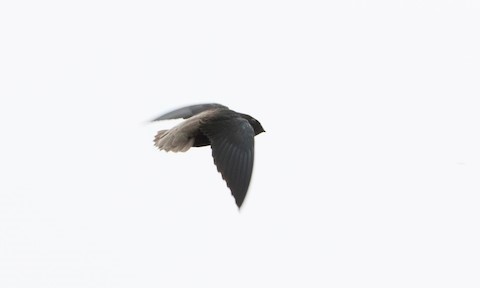
Short-tailed Swift, dorsal view showing broad wings and pale-gray rump and tail. (Pillcopato, Cuzco, Peru; July 20, 2017.) © Brian Sullivan
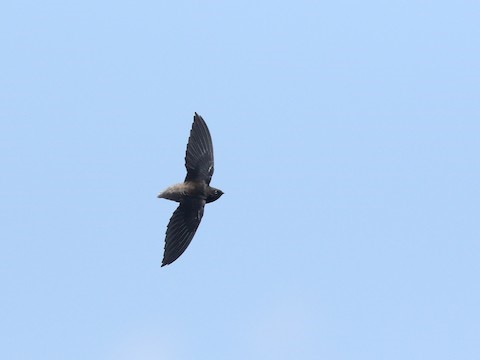
Short-tailed Swift, dorsal view showing broad wings and pale-gray rump and tail. (Little Tobago Island, Tobago; March 17, 2017.) © Stephen Mirick

Short-tailed Swift, side view showing short tail and pale-gray rump and tail. (Denise, Mato Grosso, Brazil; August 15, 2017.) © Paulo Lahr

Short-tailed Swift, dorsal view showing pale-gray rump and tail. (Iranduba, Amazonas, Brazil; September 6, 2013.) © Emerson Kaseker

Short-tailed Swift, dorsal view showing broad wings and pale-gray rump and tail. (Pillcopato, Cuzco, Peru; July 20, 2017.) © Paul Fenwick

Short-tailed Swift, dorsal view showing broad wings and pale-gray rump and tail. (Pillcopato, Cuzco, Peru; July 20, 2017.) © Brian Sullivan

Short-tailed Swift, dorsal view showing broad wings and pale-gray rump and tail. (Canopy Tower, Soberánia National Park, Panama; October 27, 2018.) © Shiloh Schulte
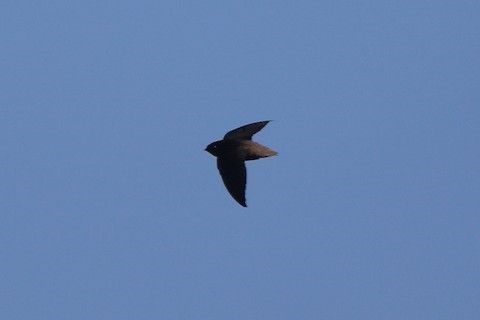
Short-tailed Swift, dorsal view showing broad wings and pale-gray rump and tail. (Perpétuo Socorro, Pará, Brazil; September 9, 2017.) © Ian Thompson

Short-tailed Swift, dorsal view showing pale-gray rump and tail. (Ulianópolis, Pará, Brazil; October 10, 2017.) © Henrique Langenegger
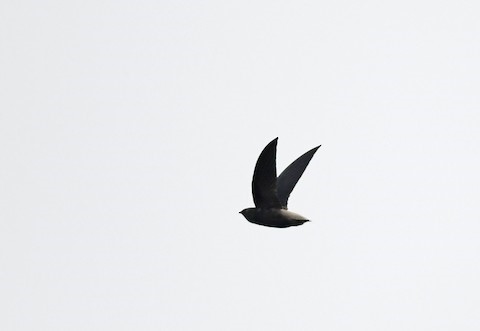
Short-tailed Swift. (Sani Lodge, Sucumbíos, Ecuador; March 30, 2019.) © Joshua D. Vandermeulen
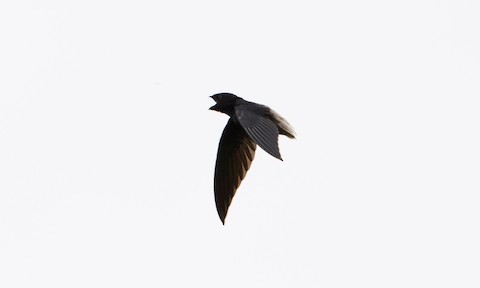
Short-tailed Swift, with mouth open for prey. (Pillcopato, Cuzco, Peru; July 20, 2017.) © Brian Sullivan

Short-tailed Swift, side view showing broad wings and pale-gray rump and undertail coverts. (Manaus, Amazonas, Brazil; February 9, 2018.) © Anselmo d’Affonseca

Short-tailed Swift, ventral view showing broad wings with bulging convex trailing edge and pale undertail coverts. (La Elisa, Magdalena, Colombia; January 25, 2020.) © Matthew Grube
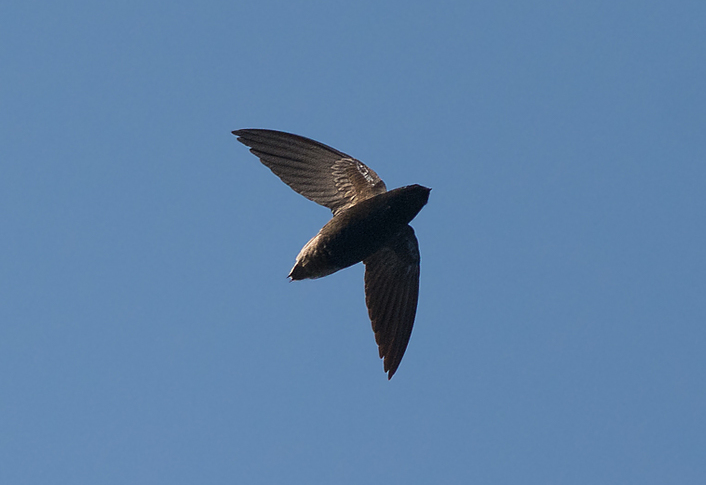
Short-tailed Swift, ventral view showing pale undertail coverts. (Presidente Figueiredo, Amazonas, Brazil; September 18, 2015.) © Rodrigo von Mühlen
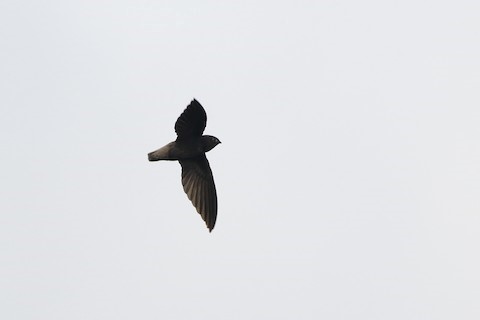
Short-tailed Swift, side view showing broad wings and pale-gray rump and undertail coverts. (Canopy Tower, Soberánia National Park, Panama; October 29, 2018.) © Ohad Sherer

Short-tailed Swift, ventral view showing broad wings and pale undertail coverts. (Porto Velho, Rondônia, Brazil; June 4, 2016.) © Emerson Kaseker
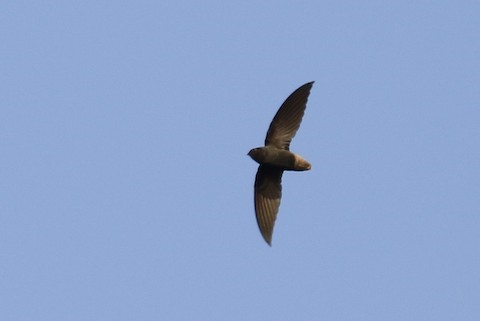
Short-tailed Swift, ventral view showing pale undertail coverts. (Gamboa, Panama; February 8, 2020.) © Kamal Mahabir
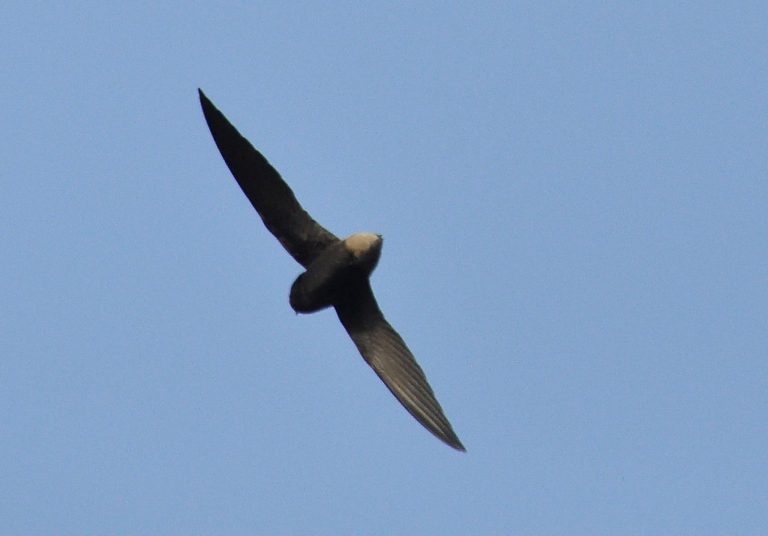
Short-tailed Swift, ventral view showing pale undertail coverts. (Presidente Figueiredo, Amazonas, Brazil; December 17, 2012.) © Robson Czaban

Short-tailed Swift, ventral view showing broad wings and pale undertail coverts. (Arraiján, Panama; October 1, 2020.) © Aitor

Short-tailed Swift, silhouette showing broad wings with bulging convex trailing edge. (Bon Accord Sewage Treatment Ponds, Tobago; January 5, 2017.) © Tom Johnson
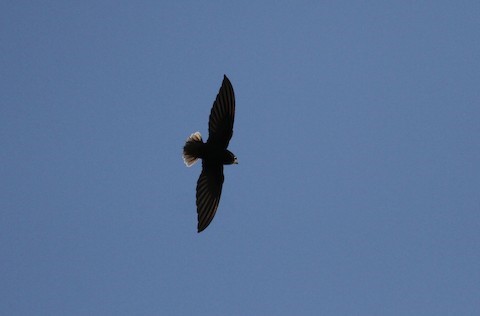
Short-tailed Swift, showing pale tail and broad wings with bulging convex trailing edge. (El Palmar, Bolívar, Venezuela; December 20, 2013.) © Jay McGowan
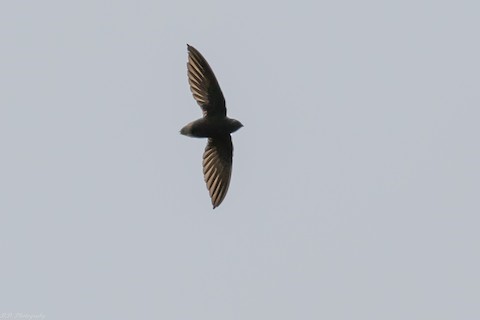
Short-tailed Swift, silhouette showing broad wings with bulging convex trailing edge and pale undertail coverts. (Puerto Leguízamo, Putumayo, Colombia; March 10, 2019.) © Blair Dudeck

Short-tailed Swift, silhouette showing broad wings with bulging convex trailing edge. (Iranduba, Amazonas, Brazil; August 1, 2017.) © Tom Johnson

Short-tailed Swift, showing pale undertail coverts and broad wings with bulging convex trailing edge. (Novo Airão, Amazonas, Brazil; September 4, 2013.) © Emerson Kaseker

Short-tailed Swift, ventral view showing broad wings and pale tail. (Gamboa, Panama; February 8, 2020.) © Kamal Mahabir

Short-tailed Swift, showing pale tail and broad wings with bulging convex trailing edge. (Serra do Divisor National Park, Acre; August 20, 2019.) © Héctor Bottai

Short-tailed Swift, ventral view showing pale undertail coverts. (São José do Rio Claro, Mato Grosso, Brazil; August 7, 2011.) © Markus Lilje

Short-tailed Swift, ventral view showing broad wings and pale undertail coverts. (Arraiján, Panama; April 19, 2020.) © Aitor

Short-tailed Swift, ventral view showing broad wings and pale tail. (Cuffie River Nature Retreat, Tobago; March 10, 2018.) © Jerry Elling
“Tumbes Swift” (ocypetes) is very similar to the widespread “Short-tailed” subspecies, with apparently identical plumage coloration but slightly longer wings and tail.

“Tumbes Swift,” C. b. ocypetes, showing pale rump and tail. (San Jacinto, Manabí, Ecuador; August 23, 2011.) © Roger Ahlman

“Tumbes Swift,” C. b. ocypetes, ventral view showing pale undertail coverts. (Jorupe Reserve, Loja, Ecuador; August 20, 2013.) © Lars Petersson

“Tumbes Swift,” C. b. ocypetes. (San Jacinto, Manabí, Ecuador; August 23, 2011.) © Roger Ahlman
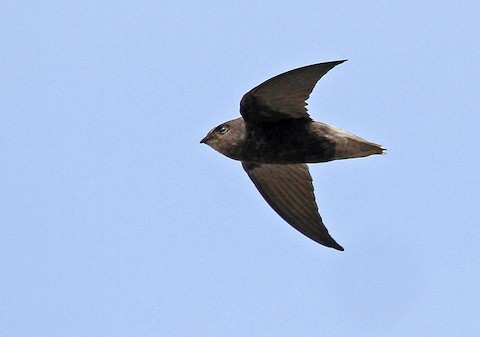
“Tumbes Swift,” C. b. ocypetes, side view showing pale undertail coverts. (San Jacinto, Manabí, Ecuador; August 23, 2011.) © Roger Ahlman
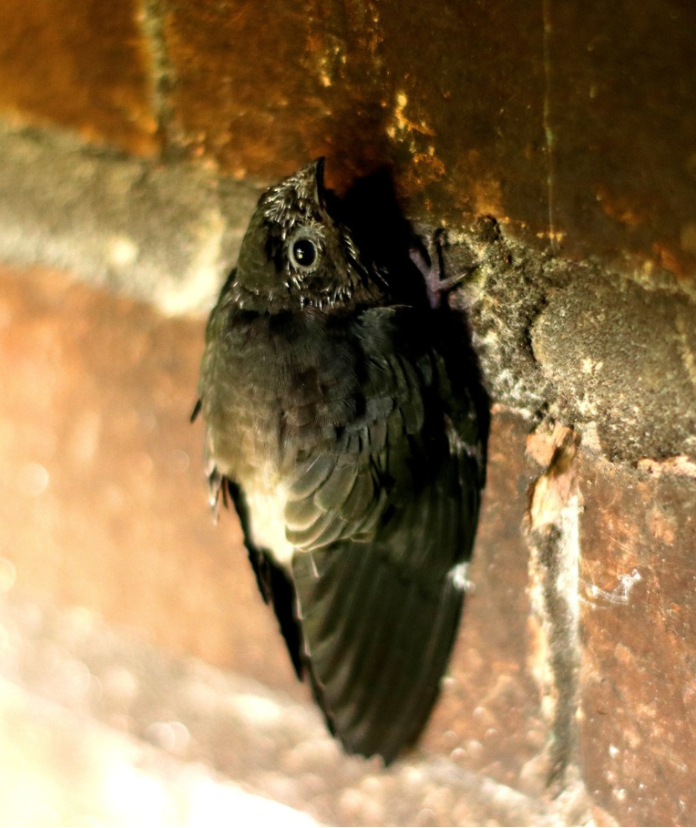
Short-tailed Swift, juvenile. (Ananindeua, Pará, Brazil; December 31, 2019.) © Cleto Cavalcante
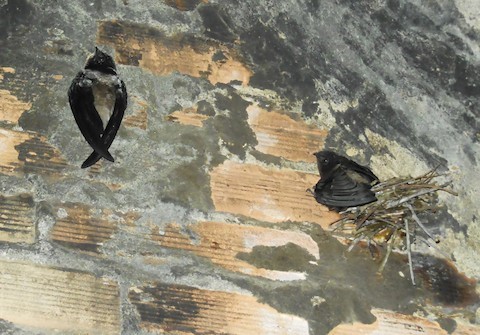
Short-tailed Swift, pair at nest in barbeque chimney. (Santa Bárbara do Pará, Pará, Brazil; February 6, 2015.) © Alexander Lees
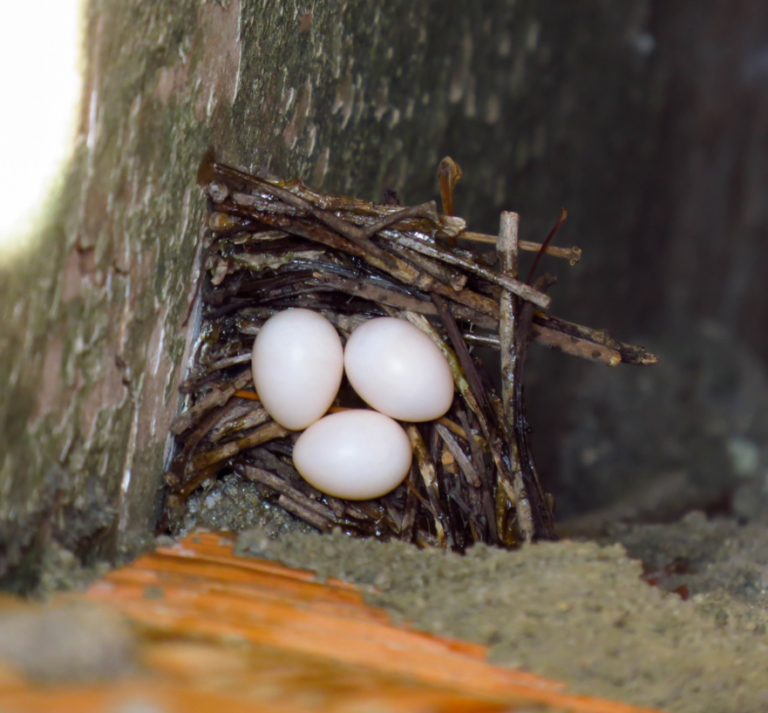
Short-tailed Swift nest in abandoned structure. (Açailândia, Pará, Brazil; September 20, 2014.) © Thiago Silveira
Notes
Polytypic species consisting of four recognized subspecies, one of which is a potentially distinct form that has been regarded as a separate species: “Tumbes Swift” (ocypetes).
References
Ascanio, D., G.A. Rodriguez, and R. Restall. 2017. Birds of Venezuela. Christopher Helm, London.
BirdLife International. 2016. Chaetura brachyura. The IUCN Red List of Threatened Species 2016: e.T22686725A93124039. https://dx.doi.org/10.2305/IUCN.UK.2016-3.RLTS.T22686725A93124039.en. (Accessed October 25, 2020.)
Chantler, P. 2000. Swifts: A Guide to the Swifts and Treeswifts of the World (Second Edition). Yale University Press.
eBird. 2020. eBird: An online database of bird distribution and abundance. Cornell Lab of Ornithology, Ithaca, N.Y. http://www.ebird.org. (Accessed October 25, 2020.)
ffrench, R. 2012. A Guide to the Birds of Trinidad & Tobago (Third Edition). Cornell University Press. Ithaca, N.Y.
Kirwan, G.M., A. Levesque, M. Oberle, and C.J. Sharpe. 2019. Birds of the West Indies. Lynx Edicions, Barcelona.
McMullan, M., and T. Donegan. 2014, Field Guide to the Birds of Colombia (Second Edition). Fundación Proaves de Colombia, Bogotá.
Raffaele, H., J. Wiley, O. Garrido, A. Keith, and J. Raffaele. 1998. A Guide to the Birds of the West Indies. Princeton University Press, Princeton, N.J.
Ridgely, R.S., and P.J. Greenfield. 2001. The Birds of Ecuador, Volume II: Field Guide. Cornell University Press.
Ridgely, R.S., and J.A. Gwynne. 1989. A Guide to the Birds of Panama (Second Edition). Princeton University Press.
Schulenberg, T.S., D.F. Stotz, D.F. Lane, J.P. O’Neill, and T.A. Parker. 2007. Birds of Peru. Princeton University Press.
van Perlo, B. 2009. A Field Guide to the Birds of Brazil. Oxford University Press.
Wikiaves. 2020. Andorinhão-de-rabo-curto. https://www.wikiaves.com.br/wiki/andorinhao-de-rabo-curto. (Accessed October 25, 2020.)
Xeno-Canto. 2020. Short-tailed Swift – Chaetura brachyura. https://www.xeno-canto.org/species/Chaetura-brachyura. (Accessed October 25, 2020.)
